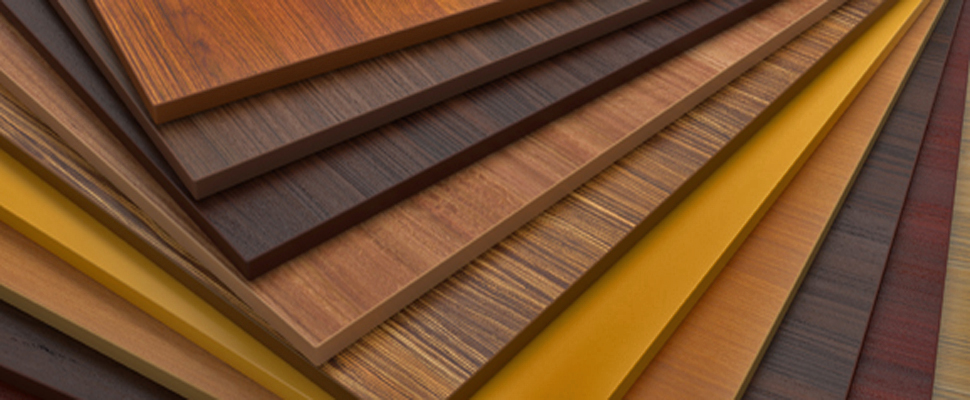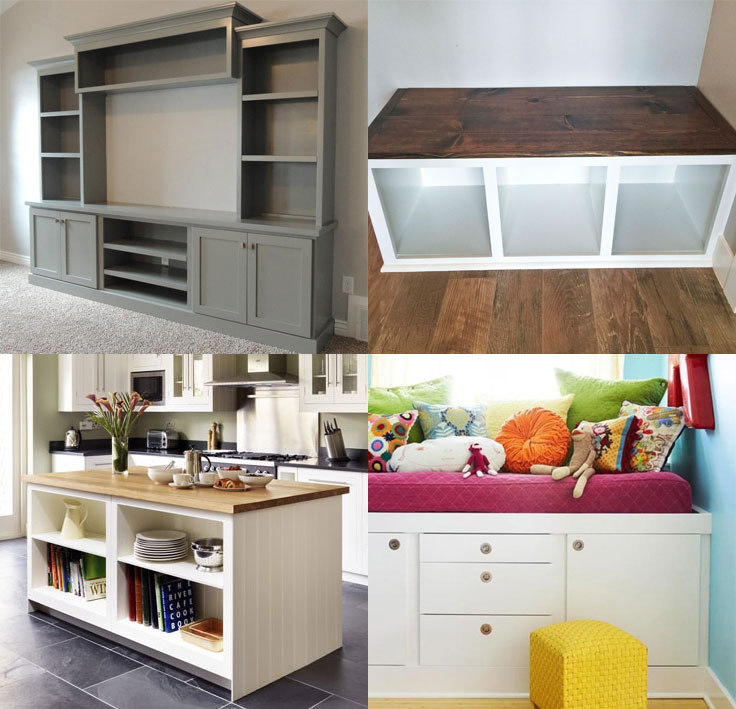News
How to Use MDF Boards Outside
Author Chigwell Building & Joinery
Date 22/11/2016
Tips on using medium density fibreboard on external projects
MDF (Medium Destiny Fibreboard) is now one of the most commonly used composite boards on the market and it’s easy to see why.
Most important of all is it’s relatively inexpensive. You can usually purchase MDF boards at the fraction of the cost of real wood such as plywood and by and large, it is just as good, if not better at certain applications. With it’s composite construction, made up of tiny wood chips, fibres and resin, it offers a strong and adaptable solution to many building projects needs.
When cut, it tends to leave a relatively smooth edge unlike some timber boards that split and splinter, and the overall finish achieved when edged or painted can be of a particularly high standard. It’s dense, heavy and durable under most conditions.
However, most MDF’s are not great in damp or wet conditions and if put under a lot of strain, can split or crack if put under too much stress. MDF also does not tend to take nails or screws as well as real wood boards, due the fibres not being able to thread as well. That said, it still offers an excellent, cost-effective way of producing great looking finishes for a number of items such as furniture, shelving, laminate flooring, mouldings and doors. In most instances, every home in the country will have MDF somewhere or other.
Where can I use MDF effectively?
MDF is ideally suited to dry, internal environments only. Standard MDF tends to absorb rather than repel moisture, so if there is water near by, watch out! It won’t take long for the boards to soak up any damp nearby and that’s when the resin in the MDF starts to break up and deteriorate. If this happens, the boards will have been compromised and will most certainly need replacing.
There are however, certain types of MDF which are adapted to cope better under damp conditions. Both Veneered Fibreboard and Moisture Resistant Fibreboard are both designed to deal with moisture far better than Standard MDF.
Veneered Fibreboard
As the name states, this type of MDF is veneered with a thin layer of wood such as ash, cedar, cherry, oak, maple, pine or walnut to name a few. By veneering the MDF, it dramatically improves the aesthetic appeal of the board but also its water resistant properties. By choosing a strong wood as the veneer, this will inevitably improve is ability to resist water when used outdoors on all veneered facing sides.
Remember however, that if any edges are cut and exposed, these need to be veneered or protected to prevent water from penetrating and damaging the boards.
Moisture Resistant Fibreboard
Unlike Standard MDF, MR MDF does not use urea-formaldehyde based resin and instead uses a moisture resistant phenol-formaldehyde glue instead. Due to this type of resin being more expensive, MR MDF invariably comes with a higher price tag. But if you’re in need of an MDF that can deal with the wet, this the most suitable option to go with.
Extra Tips
Even if your MDF is veneered or uses moisture resistant phenol-formaldehyde resins, its is still advisable to paint or seal the MDF to improve its water resistant qualities. Where the MDF is unfinished or has exposed edges, a water sealant or paint will give you an extra insurance policy against water damage if you intend to use the boards where water is ever present.
Some MDF boards may not take a waterborne polyurethane based paint so well on first application which is perfectly normal. If binding does not occur, try applying a seal with a shellac first, then apply the sealant polyurethane once dry.
Know It’s Limitations
Remember, MDF was never designed to be used is extremely wet conditions. Even if you choose to use a veneered or water-proofed MDF, they are only suited to environments with a modest level of damp. If the area you intend to use the boards is consistently wet, perhaps you should consider using another material that can cope with such applications better.
Great Ways to Use Kitchen Cabinets & Carcasses for Storage Projects
Author Chigwell Building & Joinery
Date 11/11/2016
If you’re stuck for ideal storage solutions or can’t find a piece of furniture to suit a particular room in your home, the solution may be a great deal simpler than you first thought.
Kitchen cabinets and many off-the-shelf carcasses are the perfect way to build your own pieces of furniture that will deliver on all fronts whether it be for storage, making use of dead space and alcoves or creating a piece that you simply can’t find in the stores. Better still, it’s a great deal easier than you may have first thought.
By modifying unfinished or even painted cabinets, you can create custom pieces specially designed for your home and needs.
Here’s just a few ideas that you can create with just a basic set of tools and a little DIY knowledge.
Entertainment Centre
Nowadays, most homes have large screen TVs accompanied by a whole host of set-top boxes, games consoles and a large collection of DVD’s and Blu-ray discs to deal with. If this is you, finding ways to store and display all of these items is demanding.
By using kitchen cabinets as a base, you can easily create a custom fitted entertainment centre sized perfectly to fill an entire wall or odd gaps either side of a chimney for instance. By screwing each of the cabinets together, you can then use sheets of MDF or plywood to build the main surface of the unit and then construct display shelving either side.
Then a simple lick of interior furniture paint will give the piece the professional finish it deserves and before you know it, you’ll have an amazing looking custom TV unit that will be the envy of your friends. Your TV will sit proudly centre-stage whilst all your gadgets, boxes and cables will be perfectly hidden away from view.
With all your entertainment gear in one place, you’ll free up space in the rest of the room for furniture and accessories.
Mudroom Bench
There’s nothing worse than having nowhere to store shoes, gloves and other items in hallways that are lacking in storage. A bench is easy to build using shallow height kitchen wall cabinets.
Attach three or four carcasses together in a row and then finish of the piece with a nice slab of wood for the top, four simple blocks for the feet and you’ll have a great looking piece that keeps all the entranceway clutter out of site. It will also double up as a great place to put on or take off shoes, with its height being perfect for sitting.
Paint it any colour you like to suit the room and give it personality.
Custom Kitchen Island
If your kitchen lacks a little storage or preparation area, and you have space for an island, why not build you very own customer kitchen island?
Nowadays, kitchen islands do not need to match the rest of the room so instead of ripping out the entire kitchen and replacing all the cabinets, add a focal point to the room by creating a unique kitchen island to any style you like.
All it takes is two or three standard floor cabinets. Attach them together, add a nice piece of butchers block for the top, finish the edges with mouldings and you’ll have the ideal preparation unit that will only take a couple of hours to build and offer much needed storage space and display shelves.
Give the finished piece some personality by painting it a complimentary colour to the rest of the kitchen and hey presto - you have an awesome kitchen island that will transform your room from boring to extraordinary!
Raised Storage Bed
If your kids bedrooms are cluttered with toys and games, finding places to keep them is almost impossible in small spaces.
By creating a raised bed base using cabinets, your kids will have plenty of places to store their clutter and have a really cool bed to sleep on. All it takes is a couple of kitchen cabinets and drawer units each side of the bed, plus a little bit of framing and strengthening with either MDF or plywood sheets, and you have the makings of an ingenious bed base that will solve all your storage headaches.
Work Desk/Office Area
Millions of people work from home nowadays yet finding an extra room to set up office is practically impossible and very space consuming.
However, by using just a single wall in one of the rooms in your home, you can create a bar height work area that will solve your office storage and desk space needs all in one. A few painted kitchen cabinets with drawers and cupboards topped with a good slab of butchers block will give you the perfect place to work and store stationery, papers and work material, meaning you do not have to dedicate an entire room to your home office.
Window Bench
If you’re fortunate enough to have bay windows in your home or a window that overlooks a lovely view, why not enjoy it more by building a padded bench?
A few low height kitchen cabinets, a simple MDF frame and a nicely upholstered padded top will make for the perfect area for reading, relaxing and watching the world go by.
You can easily paint your finished piece the same colours as your walls to make it blend in naturally to its surroundings or paint it a vibrant signature colour to make it the centre piece of the room. A simple yet great way to enhance a classic feature of your home.



